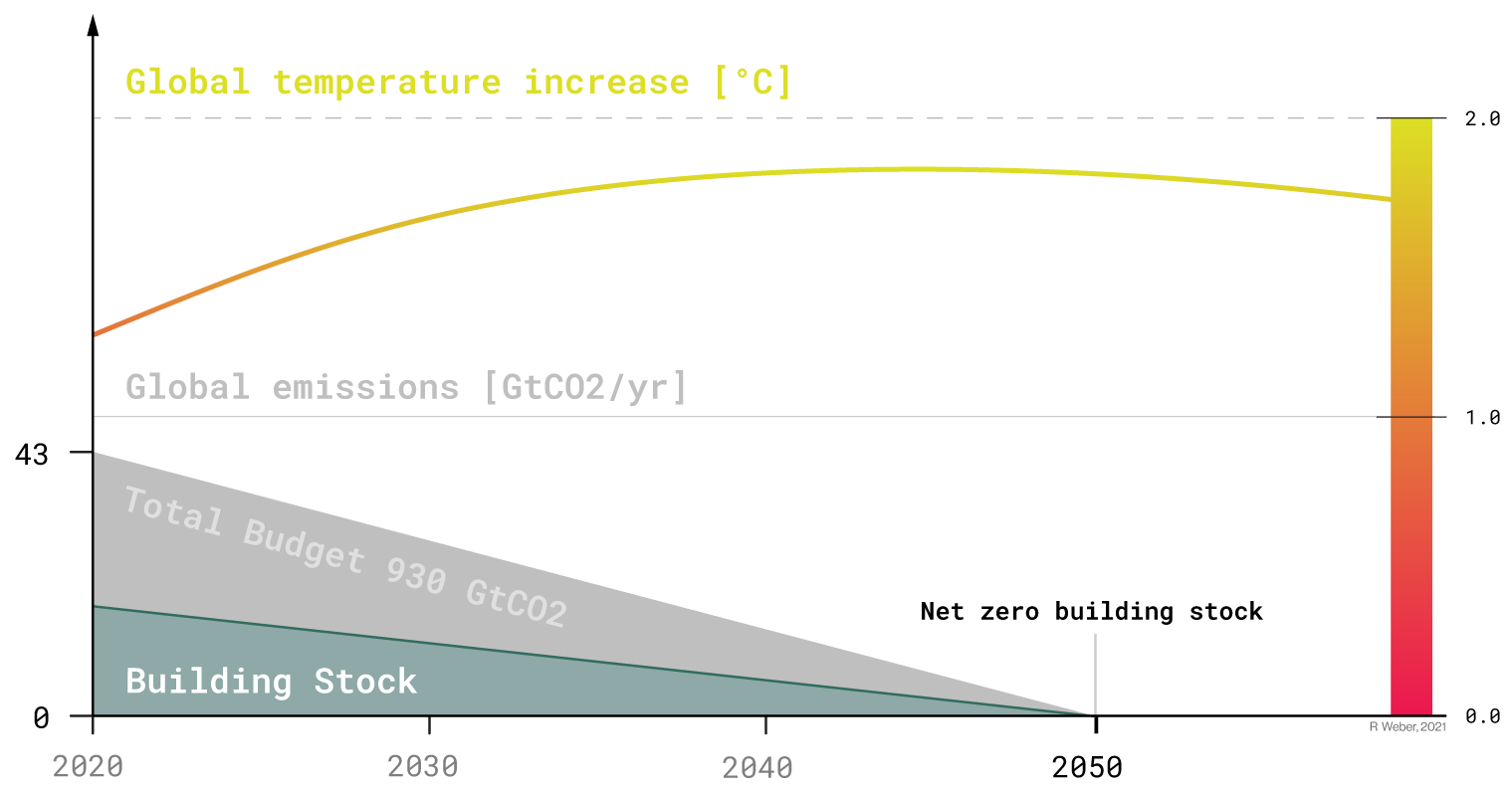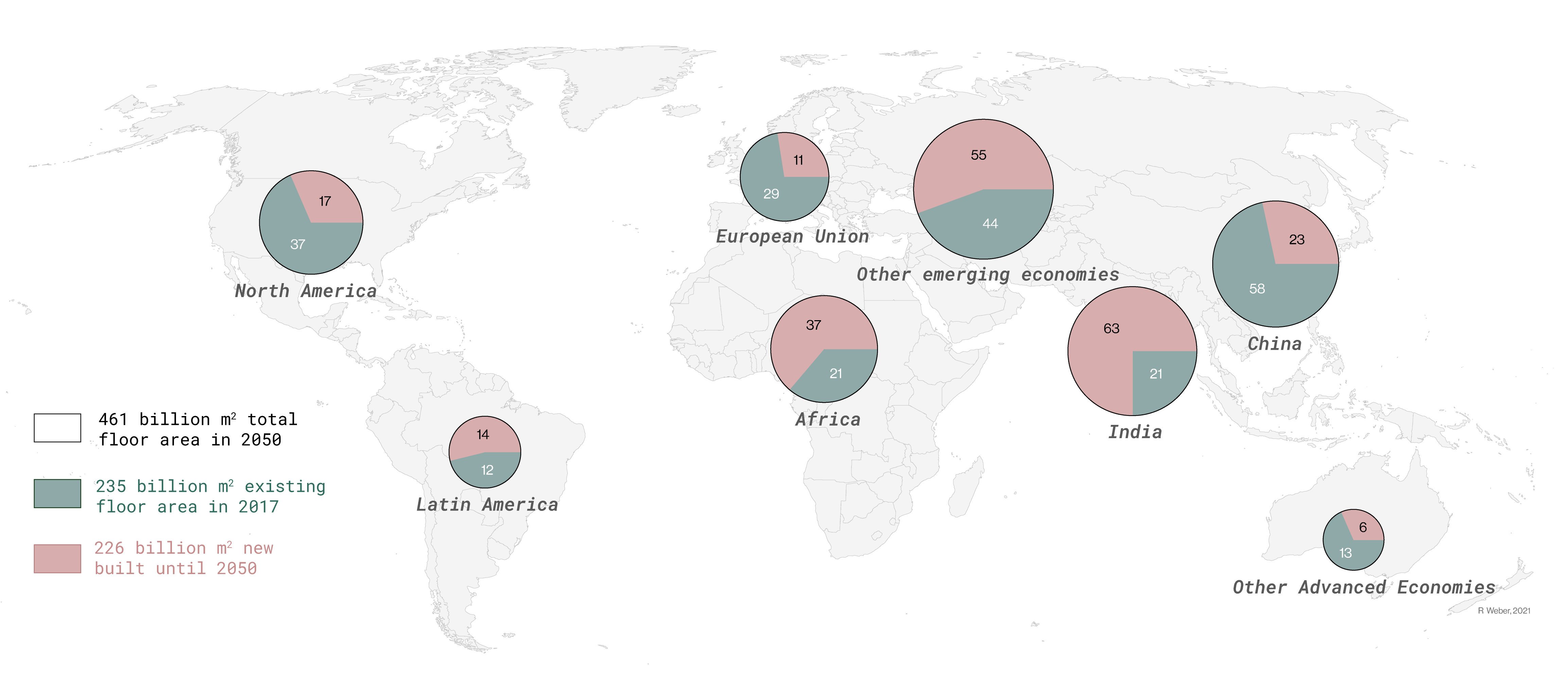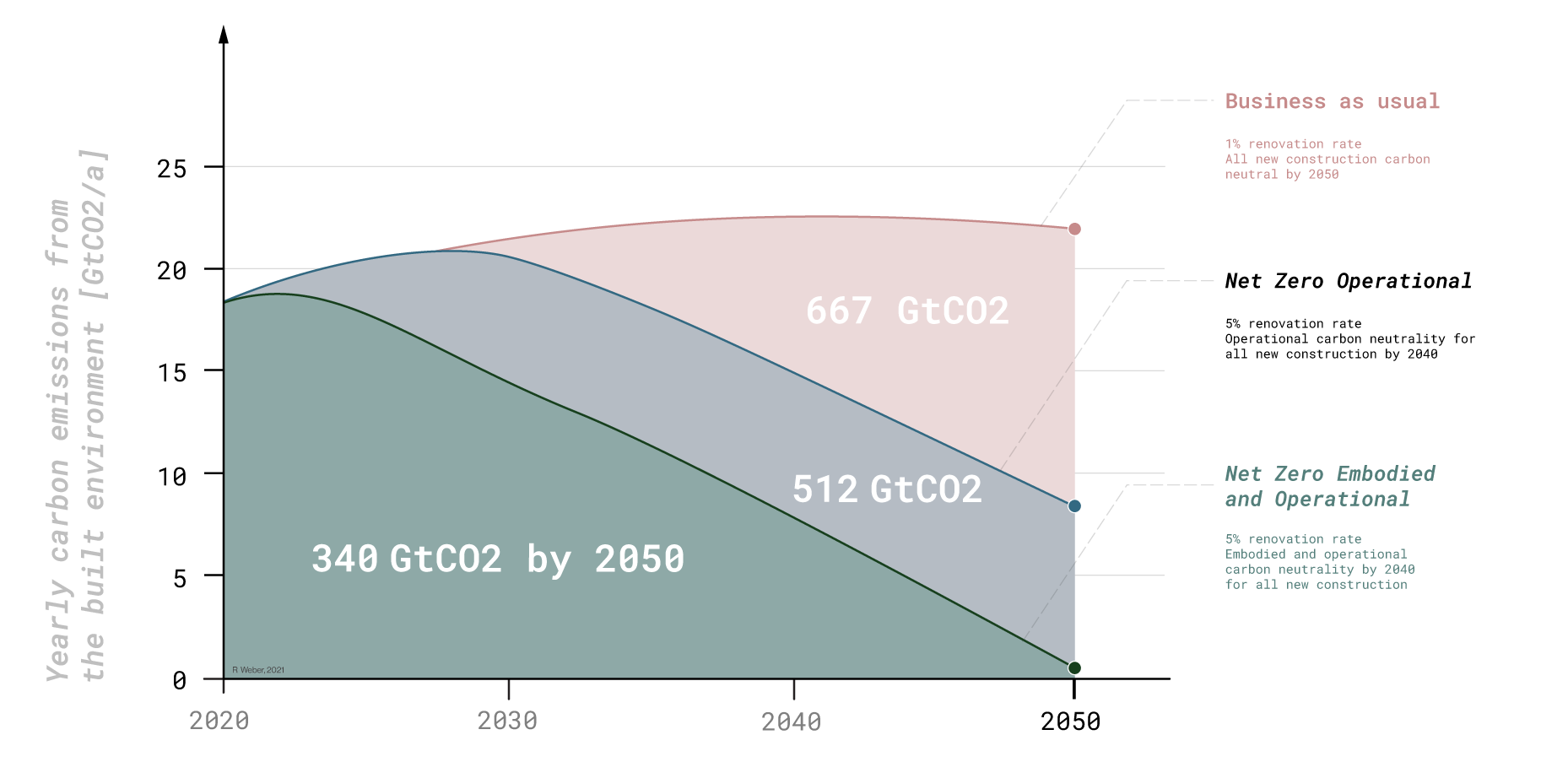The Challenge
Almost 40% of global carbon emissions can be attributed to the building sector, making the built environment both a liability and an opportunity to mitigate climate change. International organizations and many countries have set the goal of net zero emissions for all industries by 2050 to avoid irreparable damage to our planet’s climate and ecosystems. The question is whether and how society can meet this target.

The World
The United Nations (UN) and the International Energy Agency (IEA) estimate the floor area of all buildings in the world to almost double from 2017 to 2050. However, the ratio between existing and additionally new built area varies greatly between regions. Different strategies for making both new buildings more sustainable and retrofitting the existing building stock have to be implemented.

The Model
To further understand the implications of global carbon budgets on buildings, housing policy and development, we present an interactive model for carbon emissions from buildings between now and 2050. The Business as usual, scenario assumes a 1% renovation rate and linear decrease of building operation emissions to net zero until 2050. The Net Zero Operational Carbon assumes a 5% renovation rate and linear decrease of building operation emissions from 2030 to 2040 to net zero. Net Zero Operational Carbon and Embodied Carbon assumes in addition to net zero building operations, a linear decrease of embodied carbon (for construction and maintenance) from 2030 to 2040 to 0.

The Calculator
The interactive calculator to the right estimates future carbon emissions of the global building stock until 2050 for three scenarios, Business as usual, Net Zero Operational Carbon and Net Zero Operational Carbon and Embodied Carbon. The latter two scenarios are alternative, user-defined futures to the Business as usual scenario that are based on four assumptions that can be set by the user:
1) Global emission scenario and carbon budget based on one of five shared socioeconomic pathways (SSP). Only Scenario 1 has the probability to reach the UN-Climate goals.
2) Global annual building renovation rate by 2050
3) Year by which all new construction is carbon neutral in terms of operational energy use
4) Year by which all new construction is carbon neutral in terms of embodied energy use
More information regarding these inputs are provided below. Model outputs show resulting annual carbon emissions until 2050 as well as whether a scenario manages to stay under carbon budget set by the IPCC. The purpose of the calculator is to provide a sense of the enormity of the task of making the global building stock carbon neutral over the coming decades…
( The full methodology of the calculator is outlined in our preliminary report available via http://dx.doi.org/10.2139/ssrn.3939009 )
models are published and available open-source via @observableHQ and http://dx.doi.org/10.2139/ssrn.3939009
more information, graphs and analysis coming soon…